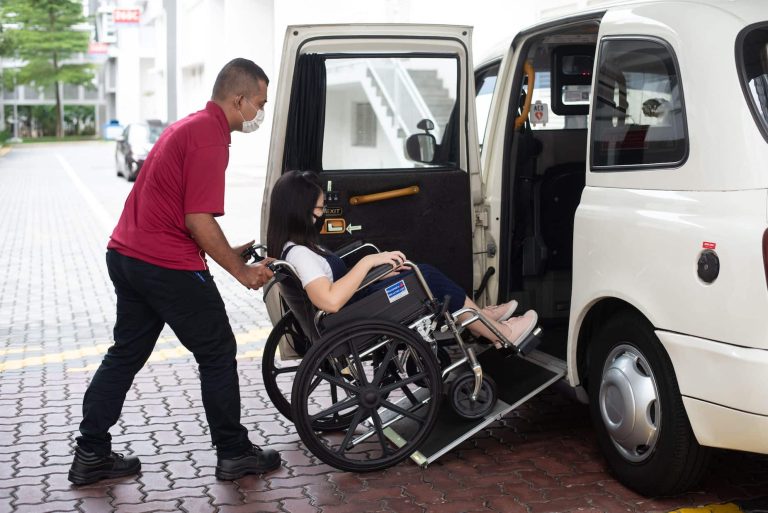Overview of Luggage & Bicycle Onboard Rules
Traveling with luggage and bicycles requires understanding specific transportation policies that vary between airlines and rail services. These regulations exist to ensure passenger safety, proper handling of equipment, and smooth operations across different transport modes. Whether you’re planning a cycling vacation or simply need to transport your bike for a race, knowing the rules beforehand can save you time, money, and potential headaches at the terminal.
Introduction to Onboard Rules
Transportation companies establish onboard rules to maintain safety standards and operational efficiency. These guidelines cover everything from standard luggage dimensions to specialized equipment like bicycles and mobility devices. Each transport provider has unique policies shaped by their aircraft or train configurations, safety protocols, and customer service standards. Understanding these fundamentals helps travelers make informed decisions about packing and booking procedures.
Importance of Understanding Luggage Policies
Knowing luggage policies before you travel prevents unexpected fees and delays at check-in. Airlines and rail services frequently update their baggage allowances, weight limits, and prohibited items lists. Travelers who familiarize themselves with these requirements can pack efficiently, avoid overweight charges, and ensure their belongings meet security standards. This preparation becomes especially crucial when traveling with valuable or fragile items that require special handling.
Bicycle Transportation Guidelines
Bicycle transportation involves specific preparation steps and documentation requirements. Most carriers treat bicycles as oversized luggage, requiring advance notification and special packaging. Electric bikes face additional restrictions due to battery safety concerns, with many airlines prohibiting them entirely. Standard bicycles must be properly disassembled, with pedals removed and handlebars adjusted to fit within carrier-approved dimensions.
Baggage Allowances and Restrictions
Standard baggage allowances typically include one or two checked bags and a carry-on item, but these limits vary significantly between carriers and ticket types. Weight restrictions commonly range from 50 to 70 pounds for checked luggage, while carry-on items must fit specific dimensional requirements. Premium ticket holders often enjoy increased allowances, while budget carriers may charge for all checked baggage.
Traveling with Special Items
Special items like musical instruments, sports equipment, and medical devices require additional consideration and documentation. Many carriers offer reduced rates for media equipment and instruments when properly declared and packed. Cremated remains can be transported as carry-on items with appropriate documentation, while mobility devices receive special accommodation under accessibility regulations.
Amtrak Services and Policies
Amtrak provides comprehensive bicycle and luggage services designed to accommodate diverse passenger needs. Their policies balance convenience with safety requirements, offering multiple options for transporting bikes and managing baggage. The rail service has evolved its bicycle program to encourage eco-friendly travel combinations, making it easier for cyclists to extend their journeys beyond traditional cycling routes.
Overview of Amtrak Services
Amtrak operates extensive passenger rail networks across the United States, connecting major cities and scenic destinations. Their services range from short-distance corridor trains to long-haul routes spanning multiple days. The company emphasizes sustainable travel options, encouraging passengers to combine rail transport with cycling adventures. Modern Amtrak trains feature dedicated bicycle storage areas and enhanced baggage handling systems.
Onboard Amenities and Features
Amtrak trains offer various amenities including WiFi, power outlets, spacious seating, and dining services on longer routes. Bicycle storage areas are climate-controlled and secure, protecting equipment during transit. Passengers can access their stored bicycles at designated stops, making it possible to cycle portions of their journey. The trains also feature accessible facilities and accommodations for passengers with mobility devices.
Bicycle and Scooter Policies
Amtrak allows bicycles and scooters on most routes with advance reservations and nominal fees. Bicycles must be in good working condition and properly secured in designated storage areas. Electric scooters and bikes face battery restrictions similar to airline policies, though some exceptions exist for mobility devices. Passengers should book bicycle space early, as availability is limited on popular routes.
Baggage Handling Procedures
Amtrak passengers can check bags at staffed stations or carry them onboard within size and weight limits. Checked baggage service is available on most long-distance routes, while corridor trains typically require passengers to manage their own luggage. The railway provides baggage carts and assistance for passengers with heavy or multiple bags. Special handling is available for fragile items and oversized equipment.
Customer Support Options
Amtrak offers multiple customer support channels including phone assistance, online chat, and station agents. Their Guest Rewards program provides additional support tiers for frequent travelers. Mobile apps allow real-time tracking of trains and baggage, while website resources include detailed policy information and packing guidelines. Emergency support is available 24/7 for passengers experiencing travel disruptions.
Airline Luggage Policies
Airline baggage policies have become increasingly complex, with carriers implementing varied fee structures and restrictions based on routes, ticket types, and passenger status. Understanding these policies requires attention to specific airline requirements, as what applies to one carrier may not apply to another. International flights often have different allowances than domestic routes, and certain destinations impose additional restrictions.
General Baggage Allowances
Most airlines allow one carry-on bag and one personal item for free, with checked baggage fees varying by route and airline. Carry-on dimensions typically measure around 22 x 14 x 9 inches, though some budget carriers have smaller requirements. Weight limits for carry-on bags usually range from 15 to 22 pounds, while checked bags commonly have 50-pound limits. Premium cabin passengers often receive additional free checked bags and higher weight allowances.
Specific Restrictions for Travel to Mexico and Madrid
Certain international destinations impose unique baggage restrictions beyond standard airline policies. Travel to Mexico may involve agricultural inspection requirements that affect food items and certain materials. Flights to Madrid and other European destinations often have stricter size limitations due to aircraft configurations and airport handling capabilities. These restrictions can affect both carry-on and checked baggage, requiring careful planning for international travelers.
Special Rates for Media Equipment and Instruments
Airlines typically offer reduced rates for professional media equipment and musical instruments when properly declared and documented. These items may qualify for special handling procedures that protect valuable equipment during transport. Musicians can often purchase additional seats for large instruments that exceed standard baggage dimensions. Professional photographers and videographers should inquire about equipment-specific policies and insurance options.
Traveling with Cremated Remains
Cremated remains can be transported as carry-on items with proper documentation and TSA-approved containers. Airlines require death certificates and crematory documentation for these sensitive shipments. The containers must be made of materials that allow X-ray screening, typically wood, plastic, or cardboard. Passengers should contact airlines in advance to ensure proper handling and respect for these special circumstances.
Military Personnel Baggage Allowances
Active military personnel and their dependents receive enhanced baggage allowances when traveling on orders. These allowances typically include additional free checked bags with higher weight limits, often up to 70 pounds per bag. Valid military identification and travel orders must be presented at check-in. Some airlines extend these benefits to military families traveling for leisure, though policies vary between carriers.
Flying with a Bicycle
Flying with bicycles requires careful planning and preparation, as airline policies vary significantly regarding fees, packaging requirements, and size limitations. Most airlines treat bicycles as oversized sports equipment, subject to special handling procedures and additional charges. Understanding these requirements helps cyclists avoid unexpected costs and ensure their bikes arrive safely at their destination.
Bicycle as Checked Baggage
Airlines generally accept bicycles as checked baggage with advance notification and proper packaging. Standard bicycles must be disassembled to fit within airline-specified dimensions, typically requiring pedal removal and handlebar adjustment. Some carriers include bicycles within free checked baggage allowances, while others impose additional fees. Passengers should confirm bicycle policies when booking flights to avoid surprises at check-in.
Restrictions for Electric Bikes
Electric bicycles face significant restrictions due to lithium battery safety concerns. Most airlines prohibit electric bikes entirely, as the batteries are classified as hazardous materials. Some carriers may accept electric bikes with batteries removed, but the batteries themselves cannot be transported on passenger aircraft. Cyclists with electric bikes should explore alternative shipping methods or consider renting equipment at their destination.
Fees for Transporting Bikes
Bicycle transportation fees vary widely between airlines, ranging from $40 to $350 per flight segment. Budget carriers often charge higher fees relative to their ticket prices, while some premium airlines include bicycles in their sports equipment allowances. International flights typically have higher bicycle fees than domestic routes. Frequent travelers should consider airline loyalty programs that may offer reduced equipment fees.
Packing Guidelines for Bicycles
Proper bicycle packing is essential to prevent damage during transport and meet airline requirements. Bikes must be securely packed in hard cases, soft bags, or cardboard boxes provided by airlines or bike shops. Pedals, wheels, and handlebars often require removal or adjustment to fit within size constraints. All loose parts should be securely attached or packed separately to prevent loss or damage.
Dimension and Weight Limits
Airline bicycle dimension limits typically range from 158 to 320 linear centimeters, depending on the carrier and aircraft type. Weight allowances usually fall between 50 and 70 pounds, including packaging materials. Exceeding these limits results in oversized baggage fees or potential refusal of transport. Cyclists should weigh their packed bikes before arriving at the airport and consider lightweight packing materials to stay within limits.
Best Practices for Packing and Transporting
Effective packing and transport strategies can significantly reduce the risk of damage and ensure smooth travel experiences. These practices combine proper equipment selection with careful preparation techniques that protect valuable bicycles during handling. Experienced cyclists often develop personalized packing routines that balance protection with weight and size constraints.
Packing Techniques for Bicycles
Successful bicycle packing begins with thorough cleaning and inspection to identify any existing damage. Remove pedals, wheels, and accessories that could be damaged or cause damage to the frame. Wrap the frame and components in protective materials like bubble wrap or foam padding. Secure all loose parts and cables to prevent movement during transport. Take photos before packing to document the bike’s condition and assist with reassembly.
Using Bike Boxes and Bags
Bike boxes and bags offer different levels of protection and convenience for air travel. Hard cases provide maximum protection but are heavier and more expensive than soft alternatives. Cardboard boxes from bike shops or airlines offer lightweight, disposable options for occasional travelers. Soft bike bags are convenient for frequent travelers but provide less protection than rigid cases. Consider your travel frequency and bike value when selecting packaging options.
Insurance for Travel with Bicycles
Travel insurance can provide valuable protection for expensive bicycles and cycling equipment. Standard airline liability coverage is often insufficient to replace high-end bikes or components. Specialized sports equipment insurance policies offer comprehensive coverage for theft, damage, and loss during transport. Some credit cards provide enhanced baggage protection when used to purchase airline tickets. Review policy terms carefully to understand coverage limits and exclusions.
Travel Planning Tips
Effective travel planning for bicycle transport involves coordinating multiple elements including booking procedures, timing considerations, and backup options. Early planning allows travelers to secure bicycle space, compare carrier options, and prepare proper documentation. These preparations become especially important during peak travel seasons when bicycle capacity may be limited.
Booking Procedures for Bikes on Airlines
Airline booking procedures for bicycles vary significantly between carriers and may require special steps beyond standard ticket purchases. Some airlines allow bicycle bookings through their websites, while others require phone reservations or airport counter arrangements. Certain carriers limit bicycle capacity per flight, making early booking essential for popular routes. Always confirm bicycle acceptance when booking flights and obtain written confirmation when possible.
Advance Notification Requirements
Most airlines require advance notification for bicycle transport, typically ranging from 24 hours to several days before departure. This notification allows ground crews to prepare appropriate handling equipment and allocate cargo space. Some carriers require specific forms or documentation to be completed before travel. Failure to provide proper notification may result in refused transport or additional fees at the airport.
Finding Suitable Transport Options
Not all airlines or routes are equally suitable for bicycle transport, making carrier research an important planning step. Some airlines specialize in sports equipment transport and offer better policies and handling procedures. Direct flights reduce handling risks compared to connections where bikes must be transferred between aircraft. Consider alternative transport modes like trains or shipping services for particularly valuable or delicate equipment. For travelers concerned about safety procedures, understanding comprehensive guidelines can provide additional peace of mind when planning journeys.
Customer Support and Resources
Accessing reliable customer support and information resources can resolve issues quickly and ensure smooth travel experiences. Modern airlines and rail services offer multiple support channels designed to address different types of inquiries and problems. Understanding how to effectively use these resources can save time and reduce travel stress when issues arise.
Accessing Customer Support for Baggage Issues
Baggage issues require prompt attention and proper documentation to achieve satisfactory resolution. Contact customer service immediately when problems occur, and maintain detailed records of all communications. Take photos of damaged equipment and keep all receipts related to baggage fees and replacement items. Many carriers have dedicated sports equipment specialists who better understand bicycle-related issues and can provide more effective assistance.
Online Resources for Luggage Policies
Airline and rail service websites contain comprehensive policy information that is regularly updated to reflect current requirements. These resources often include packing guides, fee calculators, and frequently asked questions specific to sports equipment. Mobile apps may provide additional features like real-time baggage tracking and policy updates. Bookmark relevant policy pages and check for updates before each trip, as requirements can change frequently.
Utilizing Live Chat for Immediate Assistance
Live chat services offer immediate support for urgent questions and can often resolve issues faster than phone support. These services are particularly useful for clarifying policy details, confirming reservations, and addressing last-minute concerns. Chat transcripts provide written records of support interactions that can be referenced later if needed. Some carriers offer specialized chat support for premium passengers or complex equipment transport questions. When dealing with accessibility concerns or understanding bus boarding etiquette, having immediate access to knowledgeable support staff can make travel much smoother.
Frequently Asked Questions
What are the general luggage allowances for airlines?
Most airlines allow one carry-on bag and one personal item for free, with checked baggage fees varying by airline and route.
Can I transport my bicycle on an airline?
Yes, most airlines accept bicycles as checked baggage with advance notification and proper packaging, but fees and specific requirements may apply.
What should I do if I have special items like musical instruments?
Special items often require additional consideration and may qualify for reduced rates or special handling procedures when properly declared.
Are there restrictions for traveling with electric bikes?
Yes, many airlines prohibit electric bikes due to battery safety concerns, while others may allow them with batteries removed.
How can I ensure my luggage and bicycle are handled properly during travel?
Familiarize yourself with transportation policies, pack items securely, and consider travel insurance for valuable equipment.
Navigating Travel with Luggage and Bicycles
Understanding the rules and regulations surrounding luggage and bicycle transport is essential for ensuring a smooth and hassle-free travel experience. By being informed and prepared, travelers can enjoy their journeys without unexpected interruptions.





